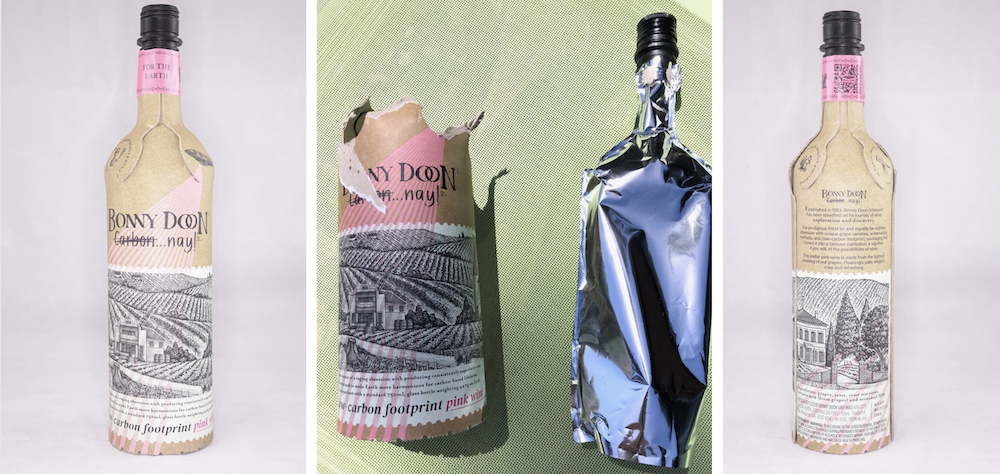
May 21, 2024 – Remember when it was cool, or perhaps even necessary, to swig wine from a clandestinely brown-bagged bottle? Now you can relive the good old frat boy days of college and be totally legit.
Have you seen the new Carbon…Nay! Provençal-style Bonny Doon Vineyard Rosé in FrugalPac? Essentially wine in a paper bottle, the Doonsters describe it as “planet-friendly, pink and picnic-perfect.” For the record, the package looks rather like the Pink Panther wearing a trenchcoat made from a cardboard box.
The wine inside, which is all that matters, is quite good, a thirst-quenching light and lively rose made from Grenache, Cinsault and Mourvèdre, grown on the Central Coast, and $16.99. It’s handily contained in an aluminum pouch with a plastic screwcap.
In reality, this is a further evolution of the wine in a box concept that’s been around for decades and is steadily growing in popularity as consumers realize the cost savings and environmental benefits of wine in something other than glass. The innovative part is using cardboard to emulate the tall shouldered look of a Bordeaux bottle.
According to Frugalpac Limited—a British company motivated to reduce the impact of carbon on the planet by engineering sustainable packaging using recycled paper—the “Frugal Bottle” has a 6x lower carbon footprint than an average glass bottle. The bottles are made from 94% recycled paperboard. A full 9-liter case weighs 24 pounds compared to an average of 40 pounds for a case of wine in glass bottles, and some municipalities are not even accepting glass to recycle any longer.
The cardboard bottle also happens to be made right here on the Central Coast, by King City’s venerable Monterey Wine Company, in partnership with Frugalpac Limited. It just so happens that Monterey Wine Company built the first Frugal Bottle Assembly Machine in the US.
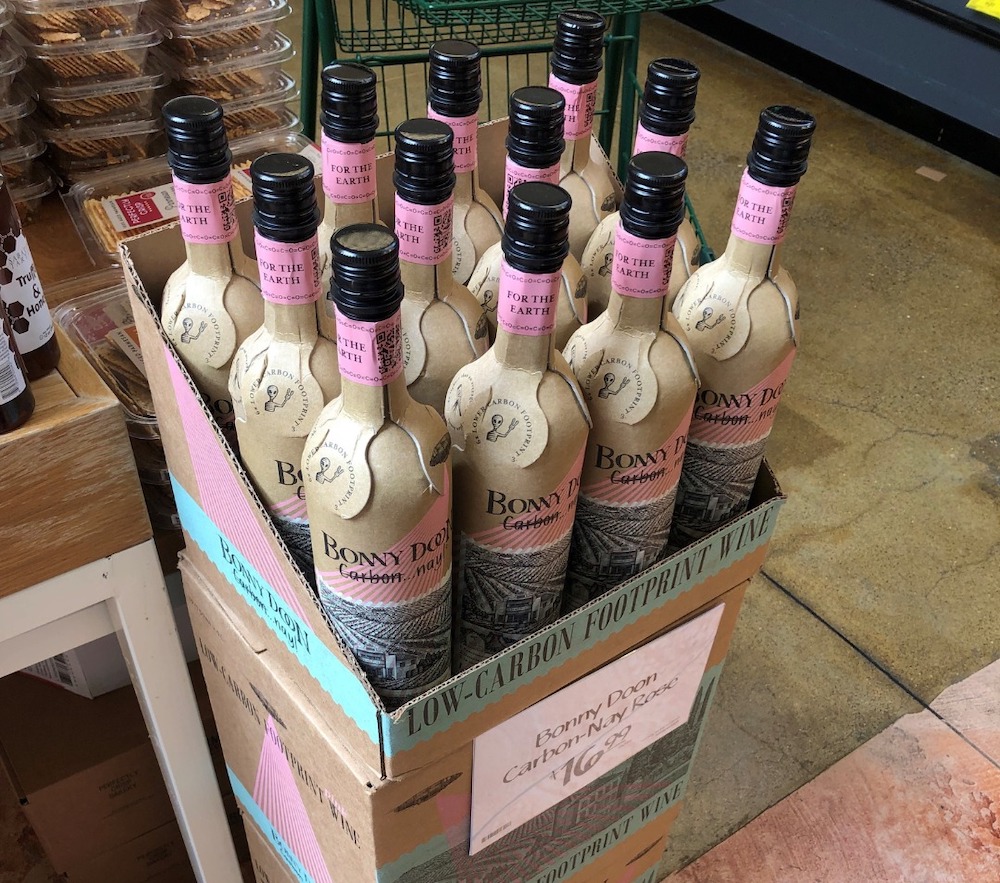
The wine is being sold at Whole Foods nationwide. Winemaker Nicole Walsh says they made 2,400 cases of the Carbon…Nay Rose, and our editor, Debby Luhrman, reports that it’s already sold out at the Capitola Whole Foods. Walsh says they are in discussion with their distribution partners regarding additional varieties to pursue.
Andrew Nelson, President of WarRoom Cellars, parent company of Bonny Doon Vineyard, worked with Frugalpac, Monterey Wine Company and Whole Foods to pilot Carbon…Nay, saying, “We’re grateful to be a trusted pioneer in the US by Frugalpac and to work with Whole Foods Market to bring this low carbon footprint and planet earth preserving package to consumers nationally. The Dooniverse beckons us all to explore.”
The press release announcing the product tells us that the Frugal Bottle starts as flat recycled paperboard, which is then printed and die cut. A food grade PET pouch, with a screwcap enclosure, holds the wine inside. Both parts can easily be separated and recycled once the wine has been consumed.
It’s an exciting development that’s been a while in the making. Randall Grahm has long wanted to find an alternative to heavy glass, weighing in (ever so lightly) on the topic with this classic RG comment: “We’ve done enough carbon dating, now may be the time to breakup. #breakingupishardtodoon.”
Grahm and Nelson are not alone in their quest to save the planet while providing beverages of enlightenment and enjoyment: with a special emphasis on the “light” part.
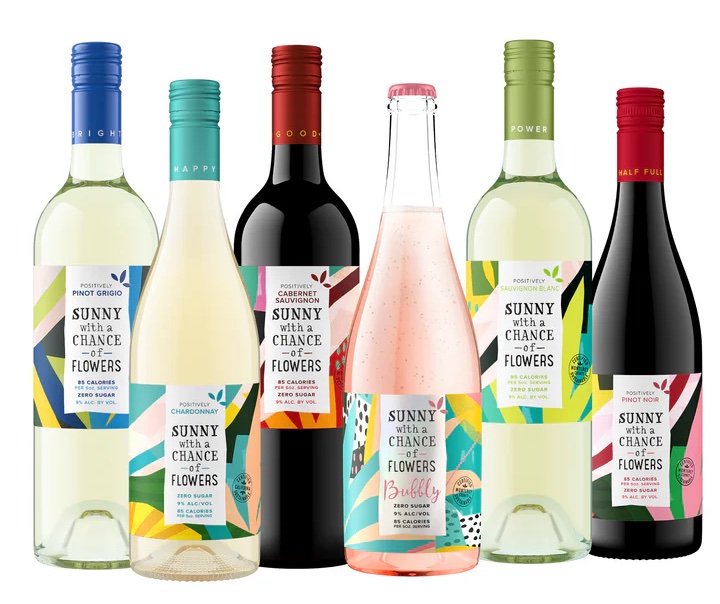
One of the largest wineries in Monterey, Scheid, may not have jumped on the paperboard bandwagon just yet, but they are on a mission to reduce their carbon footprint by lightweighting their bottles. Scheid’s chief marketing officer Sylvia Bronson says they’ve shifted 46% of their glass needs to lightweight bottles, which are 61 grams lighter than the midweight glass they had been using. This translates into a weight savings of about 1.6 pounds per case, and nets out to a weight savings of 356 tons last year.
Using lighter glass also trims the cost per case by .50, which adds up when you are talking about 670,000-700,000 cases per year. Bronson the switch allows Scheid to hold steady on pricing to consumers.
Scheid has worked hard to consolidate its glass molds to standard types and streamline production to reduce complexity. “Around 82% of our volume gets produced in 5 bottle molds,” says Bronson. “We have lightweight, midweight and premium category bottles that we use for different products.”
Sunny with a Chance of Flowers, Ryder Estate, District 7, Carys, Blue Canyon, and Don’t Mind If I Do, are some of the key brands for which Scheid made the switch to lightweight glass.
Further, says Bronson, “With lightweight vs. conventional bottles, on average, we can fit 168 more cases in a truckload, which reduces the number of trucks needed to ship our wines.” And that results in fuel savings and a reduction in carbon outlay.
Generally, consumers don’t even notice the difference, so there’s no perception of lessened quality when the bottles lose weight.
But what about if the glass bottle had a different shape altogether?
A Napa-based company, Neotempo, just announced a hexagonal glass wine bottle to save space in shipping. Neotempo’s CEO Kia Behnia, a tech innovator, insists round wine bottles are inefficient, resulting in a lot of “dead air” being shipped unnecessarily. Think about how efficiently bees create a honey storage device with their hex-shaped comb units.
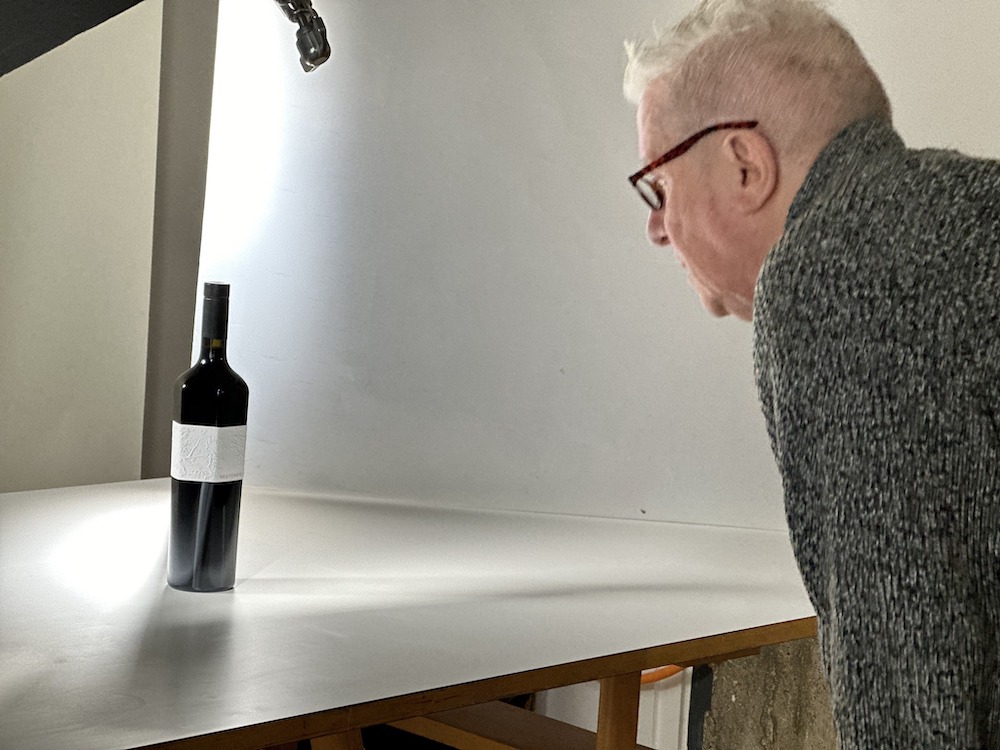
According to the company, a traditional pallet holds about 56 cases of wine, whereas the new hex design can accommodate 80 cases. That saves up to 39% on shipping costs. Behnia is hoping Napa wineries will do the right thing and adopt this new format. He’s also talking about an EV only delivery service for the Bay Area.
When it comes to sleek packaging, though, it’s hard to beat aluminum. Sure, wine in cans has been around for a bit, but what if a can could take the shape of a wine bottle?
Bogle Family Winery, a 2.5M case family-owned company since 1968, and based in Clarksburg, CA, has just taken a bold step towards passing on glass.
Jody Bogle, vice president of consumer relations at Bogle Family Wine Collection, says they just launched a new brand called Element[AL]. It’s a line of aluminum 750ml wine bottles that weigh just 90 grams when empty: 80% less than glass. The bottles were developed by CCL Container in PA, famous for beverage, cosmetic and aerosol cans.
Not only are the aluminum bottles much lighter and an inch shorter than standard Burgundy glass, but they are exquisitely decorated with stunning designs, created by the agency, Stranger & Stranger. Formed in 1994, the San Francisco-based agency specializes in alcoholic beverage packaging. Printing is done directly on the sheet of aluminum from which the bottles are formed. Every inch of the bottle can be custom decorated.
According to CCL, more than two-thirds of all the aluminum ever produced is still in use today, mostly because recycling aluminum requires only 5% of the energy needed to produce native aluminum from bauxite ore. Recycled aluminum can take many forms, and saves more energy during recycling than any other material.
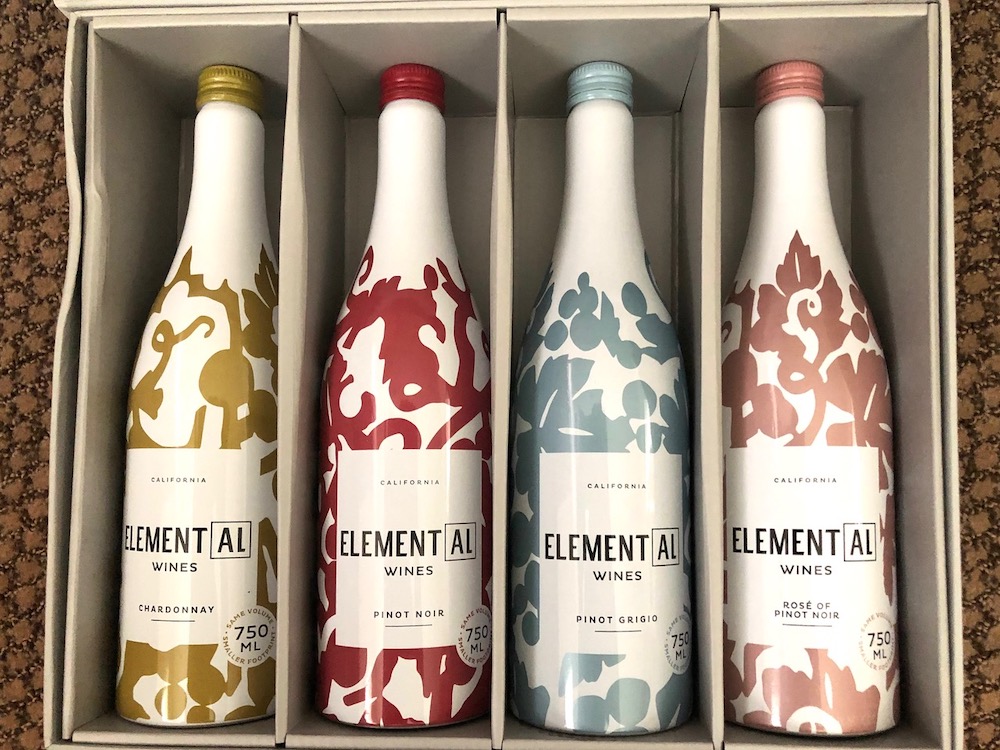
There are four varieties of Element[AL] available in the market now: Rosé of Pinot Noir, Pinot Grigio, Chardonnay (40% oak-aged) and Pinot Noir, aged in oak for 12 months, all from Bogle’s estate vineyards, as well as from those of their grower partners. The retail price is $16.99.
Although they are a very traditional farming family — Jody Bogle’s grandfather converted his farmland from corn, wheat and safflower to winegrapes beginning in 1968—they are taking a very different approach to marketing the Element[AL] wines. Based on feedback from focus groups, they are treating it more like a high-end cosmetic or fashion brand, placing ads in outlets like Architectural Digest, Cosmo and Vogue.
“We’re waiting to see what the consumer reaction is,” says Bogle. The products were initially previewed at the Sundance Film Festival in January and went onto shelves in early May. You can find Element[AL] at retailers nationwide, including Total Wine, Target, Safeway and Nugget Market.
Bogle hopes that other wineries get on board, which would help push the lightweight format into the mainstream. She notes significant interest in Europe, where eco-consciousness is much more mainstream than in the US. With our state-by-state patchwork of fragmented beverage laws and inconsistent recycling policies, our country is not a Statue of Liberty level beacon of environmental stewardship.
But, if more people choose to buy wine in eco-friendly formats, like cans, boxes, paper bottles and aluminum containers, progress can be made.
As Bogle says, “Element[AL] may not change the world, but it’s a step in the right direction. It’s not a moment, it’s a movement.”
About the author
Laura Ness is a longtime wine journalist, columnist and judge who contributes regularly to Edible Monterey Bay, Spirited, WineOh.Tv, Los Gatos Magazine and Wine Industry Network, and a variety of consumer publications. Her passion is telling stories about the intriguing characters who inhabit the fascinating world of wine and food.
- Laura Nesshttps://www.ediblemontereybay.com/author/lness/
- Laura Nesshttps://www.ediblemontereybay.com/author/lness/
- Laura Nesshttps://www.ediblemontereybay.com/author/lness/
- Laura Nesshttps://www.ediblemontereybay.com/author/lness/


